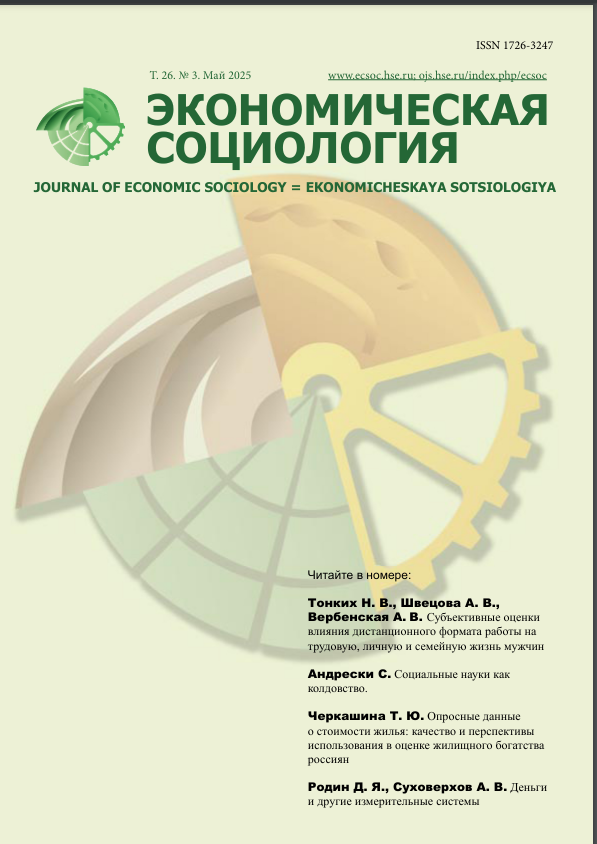Masculinity in the Creative Economy: Economic Foundations of the Gender Order
Abstract
Modern Russian society is experiencing a conservative shift that affirms a traditional model of masculinity as the dominant paradigm. Simultaneously, ongoing modernization has given rise to a unique creative sector of the economy, which is structurally organized under conditions distinct from those of industrial sectors. Although the creative economy began to develop in Russia with the onset of market reforms, its rapid growth is particularly evident today. We posit that the economic foundations underlying the functioning of this sector establish specific rules for engaging with gender identity, which are expressed through empirical gender practices that construct an alternative model of masculinity, referred to here as “adaptive.” Based on 22 interviews analyzed using grounded theory methodology, we identified key gender practices—responsibility for well-being, creativity management, communication strategies, and the integration of personal and professional life—that have shaped the social positions of the creative class within the creative economy. Considering current trends, the share of the creative economy in the GDP of developed countries is increasingly significant, and the products generated within this sector establish new consumption strategies and transmit the values of the creative class. Our exploratory research aims not only to elucidate the economic foundations of masculinity construction but also to shed light on local gender orders in Russia. These local gender orders may sharply contrast with both the dominant normative gender models in public discourse and the broader trajectory of gender order transformation.













